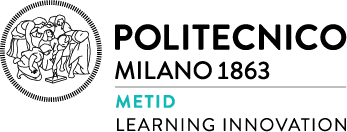
Blog #16

Digitalization of education and the fight against the social crisis generated by COVID-19
Authors: Guillermo Rodríguez Martínez
Genoveva Ponce Buenestado
Centro de Formacion PADRE PIQUER
Context
We have experienced an unprecedented situation. The crisis generated by COVID-19 has generated new social difficulties and has accelerated or increased those that already existed. Undoubtedly, people at risk of social exclusion have been the most shaken by this situation because, in addition to the health risk, the loss of employment and situations of confinement are factors that have increased their difficulties. Education is the tool to combat any situation of social crisis, it is the weapon to transform the future and young people are its warriors. On one hand, for this reason, from the Padre Piquer Training Center, we have decided to involve our students as active agents of change and help for this crisis. Each student from home attended the online classes proposed by the teachers, they tried to deal with the difficulty of being a teenager and living locked up at home, but they also felt very eager to help others in any way. On the other hand, our training center has been fighting the digital divide for our students for years through innovative initiatives that ensure a more equal education for all. This crisis has made it clear, more than ever, that we must continue working along these lines.
Visors made with 3D Printer to combat the Health Crisis
Teachers and students of the Padre Piquer Training Center come together to manufacture during confinement Protective Visors for health personnel and services.
The team of professors from the technology department decided to do something to help the professionals who were on the front lines of the battle: health personnel, service personnel and personnel and users of nursing homes.
Our center, in addition to continuing to accompany students and families, has joined the “Maker Community” by manufacturing protective visors for these groups thanks to our 3D printers. These are visors whose support is made of plastic and to which transparent acetates are attached. These visors allowed the person to have greater protection in their practices with patients infected by coronavirus or in caring for people in a store, pharmacy, etc.



All of this has been possible thanks to the Maker Community.
What is the Maker Community?
The Maker Community is made up of those people who, through open data and technology, share their experience with the community itself so that others can recreate the products, without the need for large investments of money and without resorting to companies to achieve it. Innovation and sharing are the foundations of this community.
The Padre Piquer Training Center was integrated into this Community and they quickly joined and organized different entities and individuals that had 3D printers and that could manufacture this type of parts. Each one contributed their grain of sand, from material, printing, distribution … A small initiative that added thousands of visors distributed in different hospitals, residences for the elderly, health centers, etc.


The changeling of the educational model in Spain after the appearance of COVID-19
What can education do to combat the digital divide?
In recent years, the educational model has changed with substantial improvements in technological tools. The innovative proposals of many centers in their curricula, the classrooms adaptation as a more flexible learning spaces, the power of the student in the classroom, the change the role of the teacher, collaborative methodologies.
But COVID-19 has also transformed many realities and centers have been forced to arise what to do and how to adapt to the new situation. The pen and pencil have been replaced by a mobile, a tablet or a laptop, the classroom have disappeared, and students has been had to organize and share study and work spaces at home.
The digital divide. Has been increased after this pandemic situation?
The digital divide, for many families and young people, has become a true digital blackout. Before the appearance of COVID-19, we knew that in Spain 61 percent of families had several computers at home, 44% only one and 14% none. Of this last group, 50 percent are in the south of Madrid, where 23% lack Wi-Fi, 20% do not have enough data on their mobiles and 13% do not even have a smartphone, imagine a situation thus in full confinement.
What can administrations, social organizations and educational centers do?
The difficulties that the pandemic has generated are added to those that already existed before regarding loss of employment, lack of family income, poor housing conditions, lack of basic food, hygiene, etc.
It is evident that to try to reverse these situations, the contribution of many people and institutions, public and private, in a network is needed, each one contributing their best resources and experience.
This new different view of the innovative school encourages students to discover things for themselves. They can quickly access to information and approach new technologies with their own criteria; so that is personalized learning, etc.,


